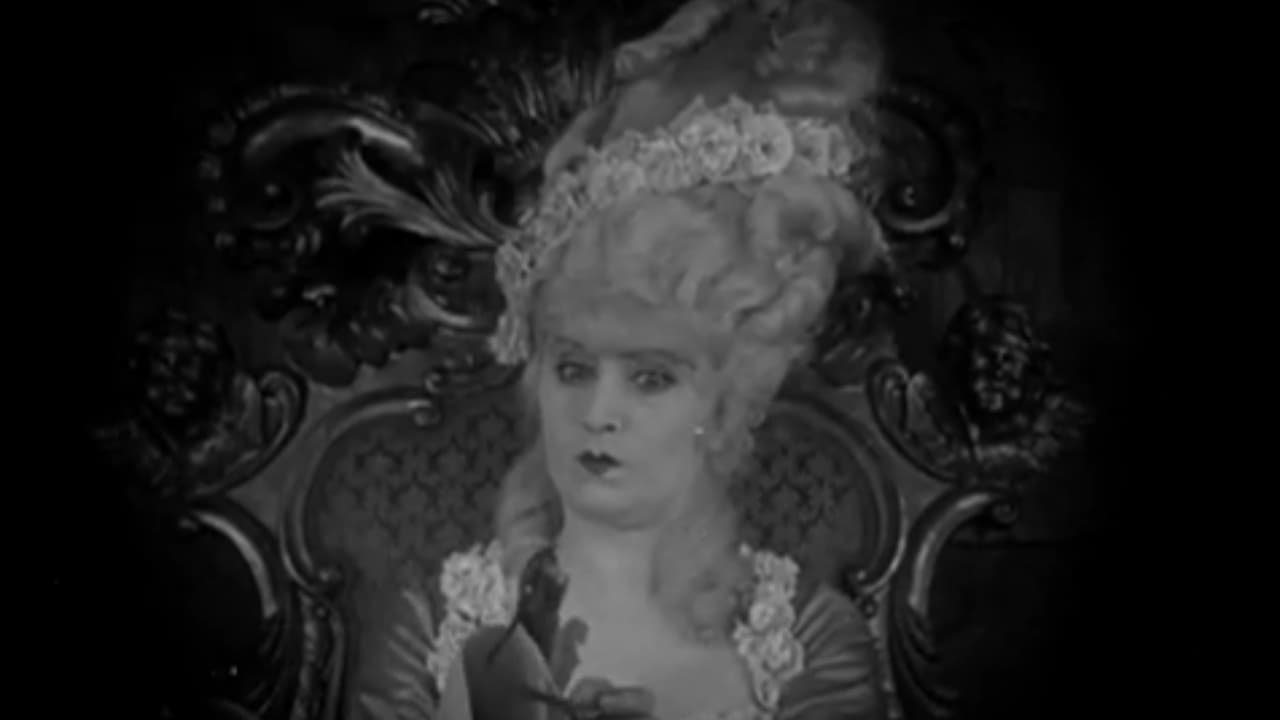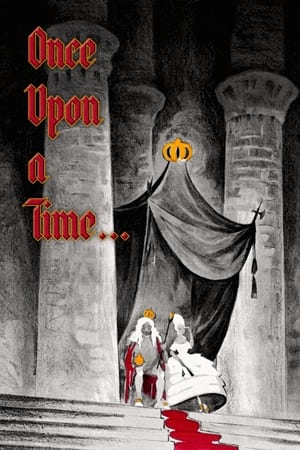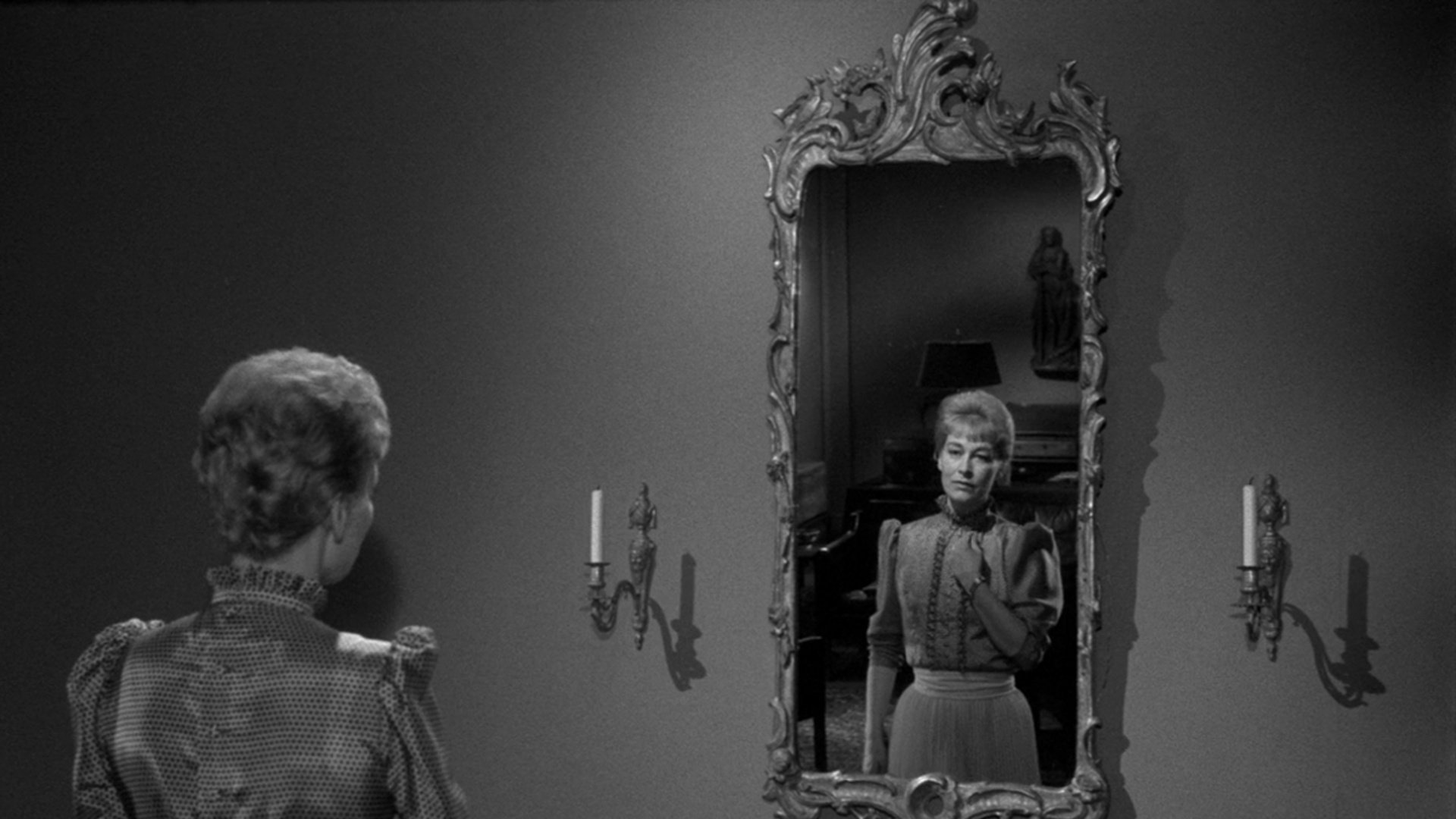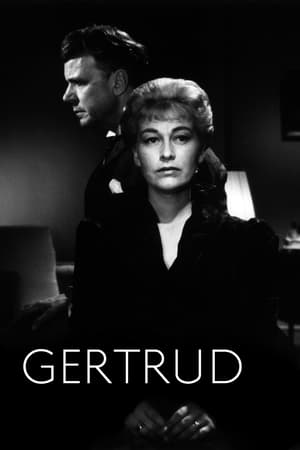Carl Theodor Dreyer (1889-1968) was a Danish film director who is regarded as one of the greatest masters of silent film.
His films are known for their intense visual style, spiritual themes, and psychologically complex characters.
Some of his most famous films include “The Passion of Joan of Arc” (1928), “Vampyr” (1932), and “Day of Wrath” (1943).
These films are considered landmarks of the silent film era and continue to be highly influential today.
Best Carl Theodor Dreyer Films
Let’s take a look at the top Carl Theodor Dreyer movies.
1. The President (1919)
“The President” (1919) is a silent film directed by Carl Theodor Dreyer and is considered to be one of his earliest works.
The film is based on a play by Henrik Ibsen and tells the story of a corrupt businessman who rises to power as the President of a small country.
The film explores themes of political corruption, power, and the corrupting influence of wealth.
Visually, “The President” showcases Dreyer’s early style, which emphasizes detailed close-ups and simple camera movements.
This creates a sense of intimacy with the characters, allowing the audience to get a deeper understanding of their motivations and inner turmoil.
Despite its age, “The President” remains a thought-provoking and powerful film that still resonates with audiences today.
It is a testament to Dreyer’s talent as a filmmaker and his ability to tell stories that are both entertaining and thought-provoking.
Overall, “The President” is a must-see for fans of silent film and for anyone interested in the early works of one of cinema’s greatest directors.
- RICARD CHRISTENSEN, CHRISTIAN ENGELSTOFF, HALLANDER HELLEMAN (Actors)
- CARL THEODOR DREYER (Director)
- Portuguese Brazilian (Subtitle)
2. The Parson’s Widow (1920)
“The Parson’s Widow” (1920) is a silent film directed by Carl Theodor Dreyer and is set in a small Norwegian village in the 18th century.
The film tells the story of a young widow who must marry one of the village’s eligible bachelors in order to secure her future, but she is torn between her duty and her heart.
One of the key strengths of “The Parson’s Widow” is its ability to convey a great deal of emotional nuance through visual storytelling.
https://www.youtube.com/watch?v=8MN0T5AJ7F0
Dreyer’s use of expressive camera movements and detailed close-ups helps to bring the characters to life and create a sense of intimacy with the audience.
Additionally, the film’s naturalistic setting and costume design serve to enhance the realism of the story.
If you like Carl Theodor Dreyer’s work, on our sister site AuteurGraph we have a profile page, a visual film timeline, and a ratings page that gives a tonne of info and data about their career in a visualized form.
Overall, “The Parson’s Widow” is a beautifully crafted film that showcases Dreyer’s early visual style and his ability to tell emotionally resonant stories through imagery.
While it may not be as well-known as some of his later works, it remains an important and enjoyable piece of cinema history.
- Carl Theodor Dreyer (Director)
- English (Subtitle)
- English (Publication Language)
- Audience Rating: NR (Not Rated)
3. Once Upon a Time (1922)


Once Upon a Time
1922 • 1h 15min • ★ 5.5/10 • Denmark
Directed by: Carl Theodor Dreyer
Cast: Peter Jerndorff, Clara Pontoppidan, Svend Methling, Hakon Ahnfelt-Rønne, Torben Meyer
The Princess of Illyria has spurned every suitor, when a gypsy loitering around the castle catches her eye. In actuality, he is the Prince of Denmark, there with his friend Kasper Røghat. The prince captivates her with magic devices, a noisemaker and a copper kettle, in return for kisses and a night in her bedchamber. When Kasper Røghat tells the king about the “affair,” the princess is thrown out of the castle, forcing her to settle in Denmark with the prince and work as a poor potter. Will the fairytale have a happy ending? (Stumfilm.dk)
“Once Upon a Time” (1922) is a silent film directed by Carl Theodor Dreyer that is considered to be one of his earliest masterpieces.
The film is a romantic fairy tale that tells the story of a young prince who must rescue his true love from a wicked witch.
One of the defining features of “Once Upon a Time” is its imaginative and dreamlike visual style. Dreyer makes effective use of special effects and fantastical imagery to create a truly otherworldly atmosphere.
Additionally, the film’s simple yet elegant camera work helps to emphasize the beauty and magic of the story.
Another standout aspect of “Once Upon a Time” is its strong sense of storytelling. Dreyer uses a combination of symbolic imagery and psychologically complex characters to create a narrative that is both entertaining and thought-provoking.
In conclusion, “Once Upon a Time” is a beautiful and timeless film that showcases Dreyer’s early talent and his ability to tell stories that captivate audiences.
It remains an important and enjoyable piece of cinema history, and is a must-see for fans of silent film and fairy tales.
4. Michael (1924)
“Michael” (1924) is a silent film directed by Carl Theodor Dreyer that explores themes of love, sacrifice, and spiritual redemption.
The film tells the story of a young woman named Fay who falls in love with a mysterious man named Michael and must choose between her earthly desires and her devotion to God.
One of the defining features of “Michael” is its intense visual style, which is characterized by detailed close-ups and dramatic lighting.
This style serves to heighten the emotional impact of the film, allowing audiences to fully understand the complexities of the characters and their motivations.
Another standout aspect of “Michael” is its deep exploration of religious themes. The film is both a love story and a meditation on the nature of faith, and Dreyer’s treatment of these themes is both sophisticated and thought-provoking.
In conclusion, “Michael” is a powerful and beautifully crafted film that showcases Dreyer’s talents as a filmmaker and his ability to tell emotionally resonant stories.
It remains an important and influential work of silent cinema, and is a must-see for fans of Dreyer’s films and for anyone interested in the themes of love and spirituality.
- English, German (Subtitles)
- English (Publication Language)
5. Master of the House (1925)
“Master of the House” (1925) is a silent film directed by Carl Theodor Dreyer that tells the story of a controlling husband and the impact his behavior has on his wife and children.
The film explores themes of domestic abuse, gender roles, and the power dynamic within a family.
One of the key strengths of “Master of the House” is its ability to convey a great deal of emotional nuance through visual storytelling.
Dreyer’s use of expressive camera movements and detailed close-ups helps to bring the characters to life and create a sense of intimacy with the audience.
https://www.youtube.com/watch?v=9QCCNGFMw44
Additionally, the film is a powerful critique of the patriarchal power dynamic that existed in many households during this period.
The portrayal of the controlling husband and his gradual descent into abuse is both disturbing and impactful, and the film serves as a powerful reminder of the importance of treating all members of a family with respect and dignity.
Overall, “Master of the House” is a well-crafted and emotionally powerful film that remains relevant today. It is a testament to Dreyer’s talents as a filmmaker and his ability to tell stories that challenge and engage audiences.
6. The Bride of Glomdal (1926)
“The Bride of Glomdal” (1926) is a silent film directed by Carl Theodor Dreyer, set in rural Norway in the 19th century.
The film tells the story of a young woman who is torn between her duty to marry a wealthy suitor and her love for a poor farmer.
One of the defining features of “The Bride of Glomdal” is its rich visual style, which is characterized by detailed sets, beautiful landscapes, and expressive camera movements.
This style serves to enhance the story’s themes of love, loyalty, and the struggle for happiness.
Another standout aspect of “The Bride of Glomdal” is its exploration of the complexities of the human heart and the choices that people make in love.
The film’s portrayal of the protagonist’s internal struggle and her eventual decision is both convincing and emotionally resonant.
In conclusion, “The Bride of Glomdal” is a beautifully crafted film that showcases Dreyer’s early talents and his ability to tell stories that captivate audiences.
While it may not be as well-known as some of his later works, it remains an important and enjoyable piece of cinema history and is a must-see for fans of silent film and romance.
- Love One Another / The Bride of Glomdal ( Die Gezeichneten / Glomdalsbruden ) ( Elsker Hverandre )
- Love One Another / The Bride of Glomdal
- Die Gezeichneten / Glomdalsbruden
- Elsker Hverandre
- Adele Reuter-Eichberg, Vladimir Gajdarov, Polina Piekowskaja (Actors)
7. The Passion of Joan of Arc (1928)
“The Passion of Joan of Arc” (1928) is a silent film directed by Carl Theodor Dreyer that tells the story of Joan of Arc, the young French peasant girl who led her country to victory against the English during the Hundred Years’ War.
The film focuses on her trial and subsequent execution, which took place in 1431.
One of the defining features of “The Passion of Joan of Arc” is its intense visual style, which is characterized by close-ups of the actors’ faces, dramatic lighting, and haunting imagery.
This style serves to heighten the emotional impact of the film and allows audiences to feel the full weight of Joan’s suffering and her unwavering faith.
Another standout aspect of “The Passion of Joan of Arc” is its powerful performances, particularly from the lead actress, Renée Jeanne Falconetti.
Her portrayal of Joan is both nuanced and deeply moving, capturing the character’s strength, courage, and inner turmoil with astonishing accuracy.
In conclusion, “The Passion of Joan of Arc” is a masterful film that remains as powerful and relevant today as it was when it was first released. It is a testament to Dreyer’s skill as a filmmaker and his ability to tell stories that touch audiences on a deep emotional level.
It is considered by many to be a landmark work of silent cinema and is a must-see for fans of film history and those interested in religious themes.
- The Passion of Joan of Arc (1928) ( La passion de Jeanne d'Arc ) (Blu-Ray & DVD Combo)
- The Passion of Joan of Arc (1928)
- La passion de Jeanne d'Arc
- Maria Falconetti, Eugene Silvain, André Berley (Actors)
- Carl Theodor Dreyer (Director) - The Passion of Joan of Arc (1928) ( La passion de Jeanne d'Arc )...
8. Vampyr (1932)
“Vampyr” (1932) is a horror film directed by Carl Theodor Dreyer that tells the story of a young traveler who finds himself caught in a world of supernatural terror.
The film is considered to be one of the first examples of a vampire film and is noted for its unconventional approach to the genre.
One of the defining features of “Vampyr” is its atmospheric and surreal visual style, which creates a dreamlike quality that sets it apart from other horror films of the time.
The use of light and shadow, along with a distinctive editing style, serve to create a sense of disorientation and unease that is deeply unsettling.
Another standout aspect of “Vampyr” is its inventive approach to the vampire mythos, which is treated as a mysterious and unpredictable force rather than a conventional monster.
This approach allows the film to explore deeper themes of death and the unknown, making it a haunting and thought-provoking work of art.
In conclusion, “Vampyr” is a seminal work of horror cinema that remains as relevant and impactful today as it was when it was first released. It is a testament to Dreyer’s unique vision and his ability to push the boundaries of what was possible in the genre.
Whether you’re a fan of horror or just a lover of unconventional cinema, “Vampyr” is a film that should not be missed.
- Julian West, Maurice Schutz, Sybille Schmitz (Actors)
- Carl Theodor Dreyer (Director) - Carl Theodor Dreyer (Writer) - Carl Theodor Dreyer (Producer)
- English (Subtitle)
- Audience Rating: Unrated (Not Rated)
9. Day of Wrath (1943)
“Day of Wrath” (1943) is a historical drama film directed by Carl Theodor Dreyer that is set in 17th-century Denmark.
The film tells the story of a young woman who is accused of practicing witchcraft and the impact this has on her family and the community.
One of the defining features of “Day of Wrath” is its stark and powerful visual style, which creates a sense of tension and oppression throughout the film.
The use of shadows, tight framing, and minimalist sets serve to underscore the film’s themes of guilt, fear, and the corruption of power.
Another standout aspect of “Day of Wrath” is its exploration of the dangers of religious extremism and the way that fear and superstition can be used to justify violence and oppression.
The film’s portrayal of the witch trials and the hysteria that surrounded them is both chilling and disturbingly relevant in today’s world.
In conclusion, “Day of Wrath” is a thought-provoking film that remains as powerful and relevant today as it was when it was first released.
It is a testament to Dreyer’s ability to tell stories that are both historically accurate and emotionally resonant, and it is a must-see for fans of historical drama and those interested in religious themes.
10. Ordet (1955)
“Ordet” (1955) is a religious drama film directed by Carl Theodor Dreyer that is set in rural Denmark in the early 20th century.
The film tells the story of a family whose lives are transformed by a series of miraculous events.
One of the defining features of “Ordet” is its minimalist approach to storytelling, which allows the film to focus on its themes of faith, love, and family.
The film is characterized by long takes, slow pacing, and a simple visual style that serves to create a sense of stillness and contemplation.
Another standout aspect of “Ordet” is its exploration of the intersection of faith and reason, and the way that these two opposing forces can coexist and even complement each other.
The film’s portrayal of the family’s struggles and triumphs is both touching and inspiring, making it a deeply moving work of art.
In conclusion, “Ordet” is a film that remains as relevant and impactful today as it was when it was first released.
It is a testament to Dreyer’s unique vision and his ability to tell stories that are both simple and profound, and it is a must-see for fans of religious drama and those interested in exploring the power of faith and love.
11. Gertrud (1964)


Gertrud
1964 • 1h 59min • ★ 7.2/10 • Denmark
Directed by: Carl Theodor Dreyer
Cast: Nina Pens Rode, Bendt Rothe, Ebbe Rode, Baard Owe, Axel Strøbye
Hopeless romantic Gertrud inhabits a turn-of-the-century milieu of artists and musicians, where she pursues an idealized notion of love that will always elude her. She abandons her distinguished husband and embraces an affair with a young concert pianist, who falls short of her desire for lasting affection. When an old lover returns to her life, fresh disappointments follow, and Gertrud must try to come to terms with reality.
“Gertrud” (1964) is a drama film directed by Carl Theodor Dreyer that tells the story of a woman who rejects the constraints of society and pursues a life of independence and fulfillment.
The film is set in turn-of-the-century Denmark and is based on the play by Hjalmar Söderberg.
One of the defining features of “Gertrud” is its exploration of the themes of love, freedom, and self-realization.
The film’s central character, Gertrud, is a complex and nuanced figure who challenges the expectations of her time and refuses to be defined by her relationships with men.
Another standout aspect of “Gertrud” is its visual style, which is characterized by long takes, careful compositions, and a restrained color palette.
The film’s visual aesthetic serves to underscore the film’s themes of introspection and contemplation, and creates a sense of stillness and quietude.
In conclusion, “Gertrud” is a film that remains as relevant and impactful today as it was when it was first released.
It is a testament to Dreyer’s ability to tell stories that are both simple and profound, and it is a must-see for fans of drama and those interested in exploring the complexities of the human experience.
3 Characteristics of Carl Theodor Dreyer Films
Minimalist storytelling: One of the defining characteristics of Carl Theodor Dreyer’s films is their minimalist approach to storytelling.
Dreyer often used simple and understated methods to convey complex themes and emotions, relying on long takes, slow pacing, and a focus on visual composition to create a sense of stillness and contemplation.
Themes of faith, love, and self-realization: Dreyer’s films often explore themes of faith, love, and self-realization, and the way these forces intersect and impact individuals and society.
His characters are often complex and nuanced figures who challenge societal expectations and question the meaning of their lives.
Visual aesthetic: Another defining characteristic of Dreyer’s films is their visual aesthetic, which is characterized by careful compositions, a restrained color palette, and a focus on light and shadow to create a sense of atmosphere and mood.
Dreyer was known for his innovative use of camera movements and his ability to create visual narratives that complement the themes of his films.
3 Reasons Why You Should Watch Carl Theodor Dreyer Films
Masterful storytelling: Carl Theodor Dreyer was a master storyteller who had a unique vision and an ability to tell stories that are both simple and profound.
His films are characterized by minimalist storytelling that focuses on the complexities of the human experience and the impact of faith, love, and self-realization on individuals and society.
Visually stunning: Dreyer’s films are known for their visually stunning aesthetic, which is characterized by careful compositions, a restrained color palette, and a focus on light and shadow.
His innovative use of camera movements and his attention to detail make his films a visual feast that are as engaging as they are beautiful.
Relevant themes: The themes explored in Dreyer’s films, such as faith, love, and self-realization, are universal and remain relevant today.
His films offer a unique perspective on the human experience and challenge viewers to think about their own lives and beliefs, making them a powerful and thought-provoking viewing experience.
Best Carl Theodor Dreyer Films – Wrapping Up
In conclusion, Carl Theodor Dreyer was a pioneering and visionary filmmaker who left a lasting impact on the world of cinema.
His films are characterized by their minimalist storytelling, their exploration of relevant themes, and their visually stunning aesthetic.
Some of his most notable works include “The Passion of Joan of Arc,” “Vampyr,” “Day of Wrath,” “Ordet,” and “Gertrud.”
Whether you’re a fan of classic cinema or simply looking for a thought-provoking and visually stunning viewing experience, Carl Theodor Dreyer’s films are a must-see.


![DVD The President 1919 [ Præsidenten / Praesidenten ] Region ALL](https://m.media-amazon.com/images/I/51wqxb0x7QL.jpg)



![Michael [Masters of Cinema] Blu-ray](https://m.media-amazon.com/images/I/51JDwWeWDoL.jpg)
![Master of the House [1925] [DVD]](https://m.media-amazon.com/images/I/51+GP7a90mL.jpg)
![Love One Another / the Bride of Glomdal (Die Gezeichneten / Glomdalsbruden) [Blu-ray]](https://m.media-amazon.com/images/I/51BV0PPspyL.jpg)




![Day Of Wrath [1943] [DVD]](https://m.media-amazon.com/images/I/416mw-DPb+L.jpg)

![Gertrud / Gertrude [1964]](https://m.media-amazon.com/images/I/01RmK+J4pJL.gif.jpg)
